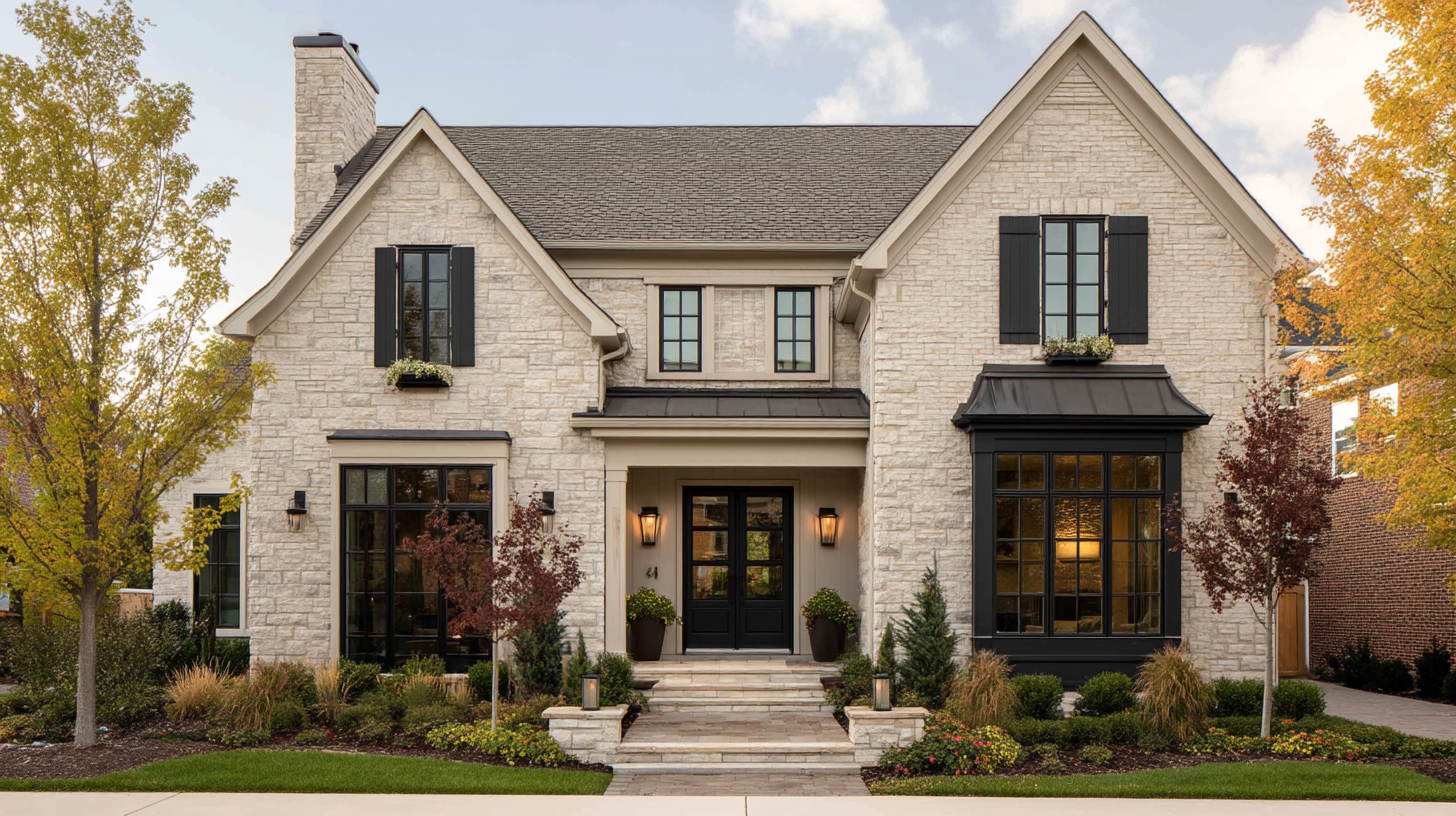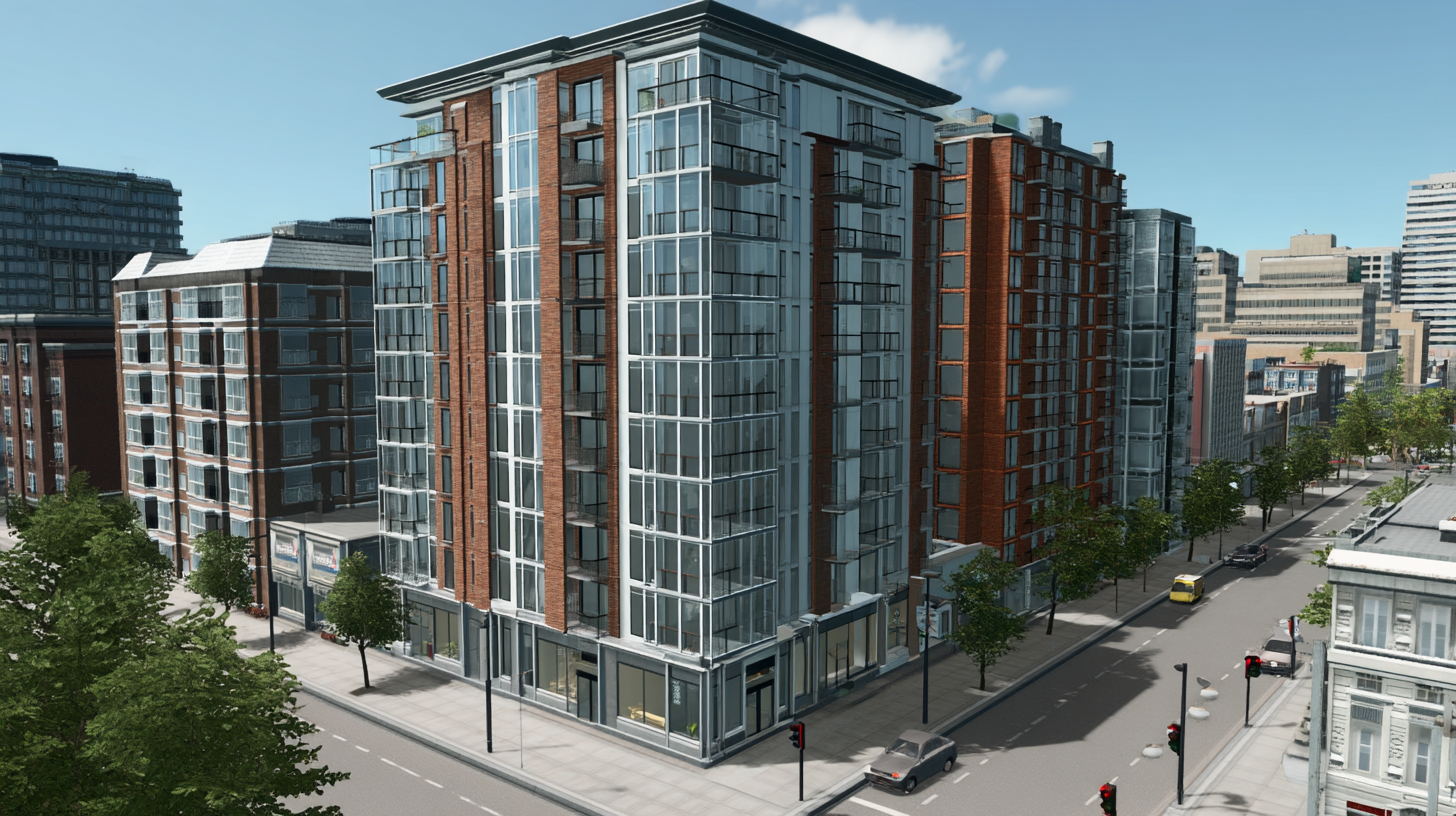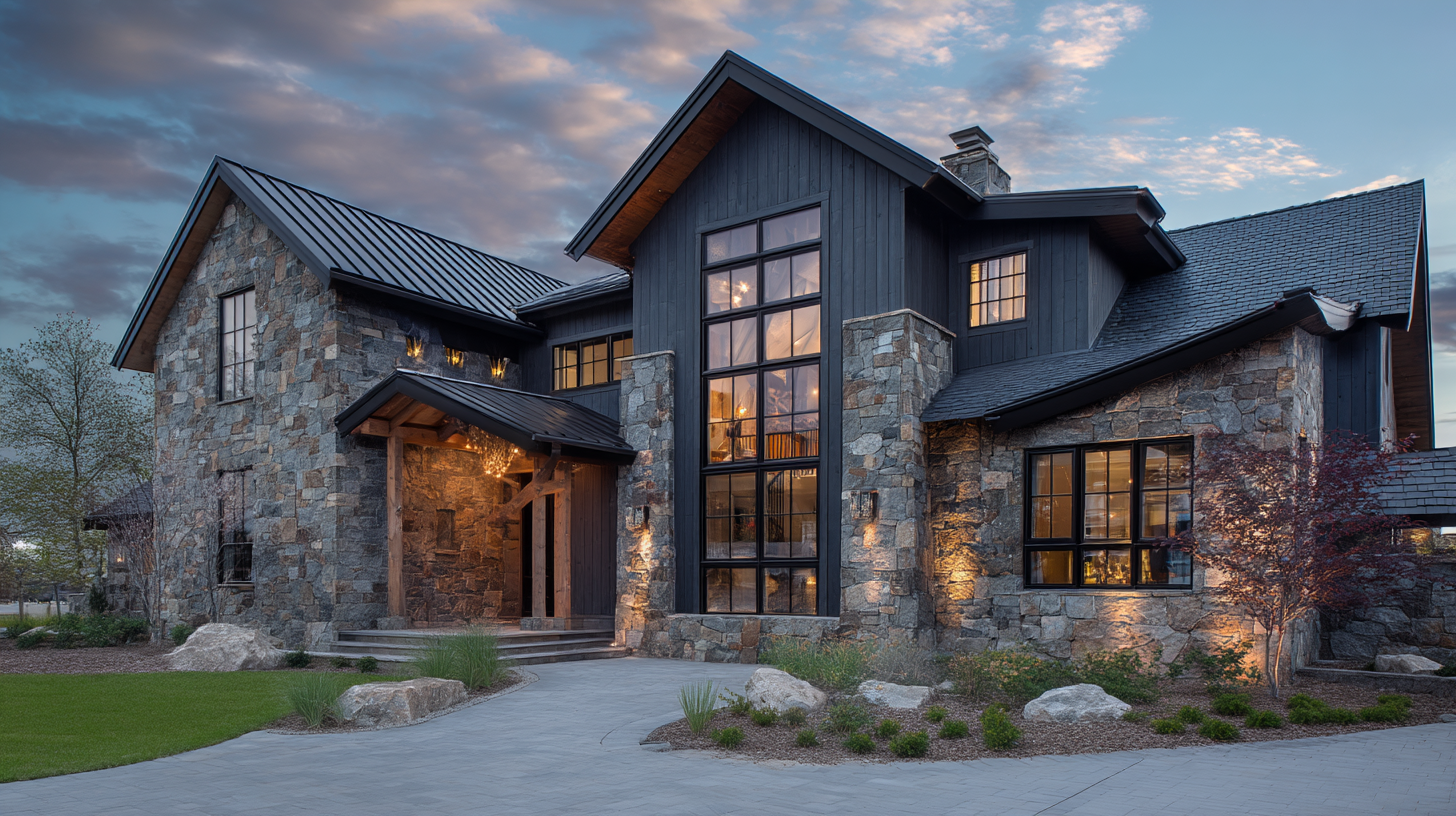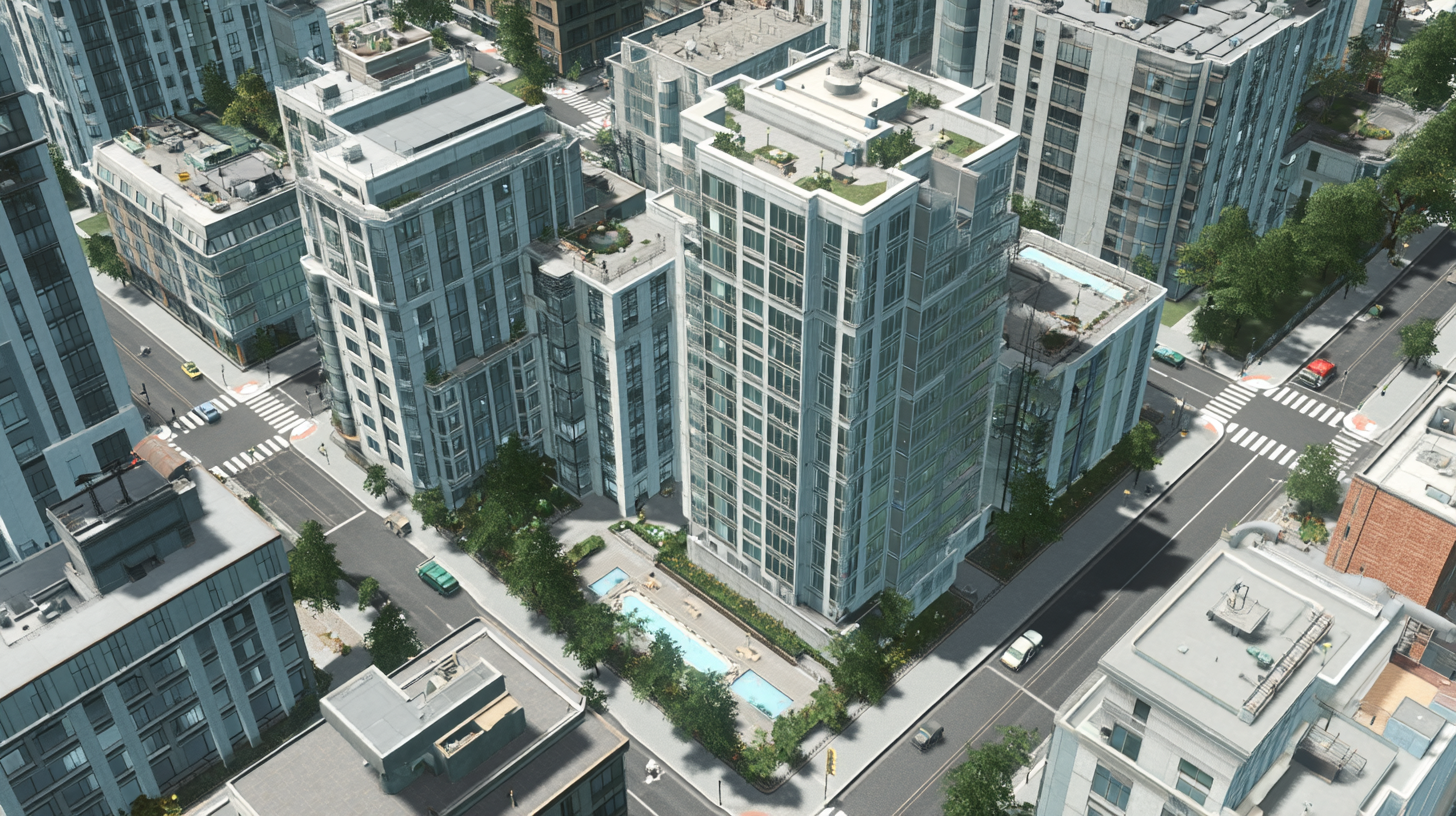Partnered with #1 ADU Builders
Contact Golden State
Drop us a line! We look forward to discussing your next project with you!
Cut the chase! Schedule a face-to-face virtual meeting with us today to dive into your project's next steps.
For our returning clients, experience our streamlined, contact-free project proposal process. Simply fill out our short project questionnaire, and we'll deliver your project proposal within 72 hours.
Contact Us:
Follow Us:

- Golden State Design & Engineering
- Comment 0
Commercial vs Residential Architecture: What Property Owners and Investors Must Know in 2025
When property owners or real estate investors compare commercial vs residential architecture, many don’t realize how different the two paths truly are. Whether you’re designing single family homes or planning retail spaces or office buildings, understanding the distinctions will determine your budget, permitting strategy, engineering approach, and long‑term return. In this article, we explore how commercial and residential properties differ, what trends are shaping commercial real estate and residential real estate in 2025, and how GSDE guides clients through both arenas.
What Defines Residential vs Commercial Properties?
Residential Properties: Intimate, Personalized, Habitual
Residential properties refer to structures built for living: single family homes, townhouses, condominiums, duplexes, and small multifamily units. In many jurisdictions, buildings of four or fewer units are treated differently in code and zoning than larger multifamily properties. These are often treated as residential units, subject to residential loans, residential leases, and residential code requirements. A primary residence or a rental home falls into this category, and residential real estate agents typically handle sales in this residential market.
Commercial Properties: Scale, Utility, and Business Use
On the other hand, commercial properties include office buildings, retail spaces, data centers, warehouses, hotels, and other buildings used for business purposes. Multifamily buildings with five or more units, such as an apartment complex, are generally considered commercial property by lenders and regulatory bodies. Commercial real estate investors often acquire these assets, secure commercial real estate loans, negotiate commercial leases, and rely on commercial real estate agents or sales agents for commercial sales and marketing. Mixed‑use developments that integrate commercial and residential components are also increasingly common in urban settings. Commercial properties tend to carry higher complexity in systems, permitting, and capital requirements, including the need for specialized construction equipment.
How “Commercial vs Residential Properties” Distinction Impacts Strategy
This distinction matters because commercial and residential real strategies require different design, engineering, financing, tenancy, and regulatory approaches. A property management company may manage both types, but the operations for residential property management differ tremendously from management of commercial space like office space. A savvy real estate investor or real estate investor group must understand these differences before commencing design or construction.
Key Differences Between Commercial and Residential Architecture

Scale, Structure, and Building Materials
In residential architecture, the scale is smaller, structural loads are lower, and lighter materials (wood framing, light gauge steel, masonry) are common. In commercial buildings, long spans, heavier live loads, and more robust mechanical systems often demand steel, reinforced concrete, curtain walls, and specialized façade systems. The cost per square foot of commercial projects is often higher due to the structural complexity.
Mechanical, Electrical, Plumbing (MEP) Complexity
Residential systems are simpler: a single HVAC system, domestic plumbing, and standard electrical loads. In commercial projects, the complexity multiplies: zoned HVAC systems, fire suppression, high electrical loads, backup power, data infrastructure, and energy controls. Integration across systems is essential for performance and cost control.
Design Intent and Aesthetic Goals
Residential design focuses on comfort, aesthetics, wellness, and site integration. Commercial properties demand branding, durability under heavy use, wayfinding, and flexibility for tenant turnover. For example, a retail space must support high foot traffic, display layout, signage, and ingress/egress flow, with an architectural identity that reinforces the brand. Office buildings must consider circulation, amenity zones, daylight, and user experience for many occupants.
Budget, Timeline, and Risk Profile
Because residential projects are generally smaller in scale, budgets, timelines, and risk are more contained. Commercial investments often require substantial capital, longer schedules, phased construction, coordination across stakeholders, and contingency planning. The exposure to cost overruns, change orders, and regulatory delays can be higher in commercial development.
Regulatory and Permitting Burden
For residential properties, local building codes, zoning, energy compliance (e.g. Title 24 in California), and site constraints play large roles. Commercial properties face additional layers: ADA access, fire marshal review, parking ratio requirements, stormwater control, environmental review (CEQA or equivalent), occupancy classifications, and accessibility for business tenants. The permitting effort for commercial projects is more layered and time consuming.
Lease Structures, Tenancies, and Income Streams

In residential investing, residential real estate investing often involves long‑term tenants, fixed rent, and straightforward residential leases with more stable demand. In commercial real estate, commercial leases often include gross leases, net leases where tenants pay taxes and common area maintenance, variable escalations, common area maintenance (CAM), and shorter lease terms. Commercial properties can yield higher rental income per square foot, but also demand more operational management and leasing turnover risk. Many commercial real estate investors expect steady income, occupancy risk mitigation, and built‑in escalations.
Financing, Loans, and Capital Structure
Residential loans are common and accessible, often with standardized underwriting and lower interest rates. Commercial loans are more complex, require deeper due diligence, larger down payments, shorter amortization, and often require debt service coverage ratio (DSCR) metrics. Some commercial real estate investors may rely on bridge loans or mezzanine financing in development phases. The negotiation and approval process for commercial real estate loans is more rigorous.
Investment Risk, Exit Strategy, and Market Dynamics
Residential investing is often considered lower risk, especially in stable neighborhoods, because housing demand is perennial and has more stable demand. Commercial investments can be more volatile, sensitive to office vacancy trends, retail market shifts, and macroeconomics. Office buildings may struggle in changing office models, retail spaces face e‑commerce pressure, and data centers have high capital but niche demand. The key differences in demand, tenant profiles, and risk tolerance demand strategic foresight.
Conversion, Mixed Use, and Adaptive Reuse
In 2025 adaptive reuse and mixed‑use development are strong trends, blending commercial and residential properties. For instance, converting underutilized commercial buildings into residential lofts or mixed retail/residential structures is more viable in many urban markets. Such conversions require navigating both residential and commercial codes, financing, and tenancy models.
Trends Shaping Commercial and Residential Architecture in 2025

Residential Real Estate and Design Trends
- Smart homes and automated building systems continue to integrate into residential properties, enabling energy efficiency, comfort, and predictive maintenance.
- Biophilic design, natural light, indoor-outdoor transitions, and sustainable materials are high priorities in new home design.
- Hybrid and flexible spaces, in which rooms serve multiple uses (office, gym, guest room), are increasingly common.
- The ADU boom continues in many markets, giving property owners a way to increase density and generate rental income without large commercial scale.
- Many designers adopt Passive House or high‑performance envelope strategies for residential, pushing toward net zero energy.
Commercial Real Estate & Architecture Trends
- Sustainable materials, glass façades, aluminum framing, and integrated façade systems are dominant in commercial projects in 2025.
- Adaptive reuse and conversion of obsolete commercial buildings into mixed use or residential is on the rise.
- Flexible floor plans, modular and prefabricated systems, and scalable infrastructure are trends in commercial space design.
- Integration of building analytics, IoT, and responsive systems (lighting, HVAC, occupancy sensors) is elevating performance in commercial real estate.
- Wellness, indoor environmental quality, and occupant health drive design decisions in office buildings, retail, and mixed-use assets.
These trends influence both types of projects. Techniques and innovations from commercial architecture often migrate into higher-end residential properties over time.
How GSDE Serves Both Residential and Commercial Clients
Cross‑disciplinary Expertise
At Golden State Design & Engineering, we combine architecture, structural engineering, civil design, land surveying, and permitting services under one roof. This integrated approach benefits clients in commercial and residential sectors alike. Whether designing single family homes or multifamily apartment buildings or office buildings, we ensure systems are coordinated, design goals are met, and cost surprises are minimized.
Client‑Driven Process
We work closely with property owners, developers, and real estate investors to understand their goals, budget constraints, and exit strategies. Our process accommodates both residential real estate investing and commercial real estate investments, ensuring the design aligns with long‑term returns.
Permitting, Compliance, and Code Navigation
Because commercial projects face greater regulatory burden, GSDE maintains updated expertise in local jurisdictions from Santa Rosa to San Jose. For residential properties, particularly in California, we manage Title 24, zoning, grading, stormwater, ADA, and energy compliance. Our permitting team helps clients anticipate delays, reduce legal fees, and avoid costly redesigns.
Feasibility, Zoning, and Mixed‑Use Planning
We help clients analyze whether a property is best suited for residential, commercial, or a combination. That includes feasibility studies, zoning analysis, lease agreements planning, and investment properties modeling. For example, if a site allows five or more units, we evaluate multifamily design, or if a site is best for retail stores with apartments above, we explore mixed use strategies.
Structural & System Design
GSDE engineers design structural systems, mechanical, electrical, plumbing, and smart systems tailored to both residential and commercial demands. We align early in design to reduce conflict across disciplines and optimize cost.
Market Locality Knowledge
We deliver value because we understand how markets differ across California cities. Whether in Folsom, Sacramento, or El Dorado Hills, we tailor design to local market demand, real estate sales dynamics, and municipal expectations, including considerations related to property taxes.
Choosing the Right Path: Residential or Commercial for Your Property

Examine Zoning and Land Use
First, confirm whether your land is zoned for residential real estate, commercial real estate, or mixed use. In many cases, parcels already zoned for retail or office may allow redevelopment into residential leases above storefronts. Conversely, a residential zone may permit a small commercial use such as a house business.
Define Your Financial and Development Goals
Do you seek cash flow from rental income, capital appreciation, or stable long‑term return? Residential properties often offer lower complexity and steady demand. Commercial properties may deliver higher yield but require more active management and risk tolerance.
Assess Capital Availability and Financing
If your capital plan supports modest debt, residential loans may be more accessible. If you are a commercial real estate investor, you can structure more complex commercial real estate loans, use syndication, or leverage equity. Be clear about risk tolerance and exit strategy.
Consider Tenant Models and Lease Structures
Residential tenants often sign annual or multi‑year leases with predictable renewals. Commercial leases involve more negotiation of CAM, net vs gross rent, escalations, tenant improvements, and lease renewals. If you prefer a hands‑off model, residential may be less burdensome.
Phasing, Growth, and Future Conversion
Perhaps you begin with residential units and later convert some space to commercial use or vice versa. Planning for future conversion or mixed use during design adds flexibility and optionality in evolving markets.
Frequently Asked Questions
What are the biggest differences between residential and commercial architecture?
They differ in scale, structural complexity, mechanical systems, tenant models, regulatory burden, lease structures, financing, and risk. Residential prioritizes livability, while commercial focuses on utility, branding, and flexibility.
Can a residential architect design commercial buildings?
Some can, but designing commercial buildings requires specialized knowledge of codes, occupancy, structural loads, and MEP systems. GSDE’s architects are experienced in both residential and commercial design.
What permits do I need for commercial vs residential projects?
Residential projects require building permits, energy compliance, and local zoning review. Commercial works often require conditional use permits, fire marshal, ADA, environmental review, parking studies, and multiple agency approvals.
Which is more expensive: a custom home or a commercial project?
On a per square foot basis, commercial projects usually cost more due to complexity. However, a high‑end custom home with premium finishes or difficult site conditions can also drive high cost.
Can I convert a commercial property into a residential use or vice versa?
Yes, with proper zoning, code compliance, and permitting. Adaptive reuse is a growing trend in 2025. GSDE can evaluate feasibility, oversee structural modifications, and guide you through approvals.
Does GSDE design both residential and commercial buildings?
Yes, our team works on both residential and commercial properties, offering architecture, engineering, permitting, and project management under one roof.
Conclusion
Choosing between residential or commercial architecture is not just a matter of style. It influences everything from systems design and financing to leasing strategy, permitting, and long‑term return. At GSDE, we guide property owners, developers, and real estate investors through both worlds with expertise, clarity, and a client‑centric approach. Whether your next project is single family homes, apartment buildings, office buildings, or retail spaces, we are ready to help you succeed.
#NAICS’s:
- 541310 Architectural Services &
- 541330 Engineering Services
DUNS NO:
- 119132267
#SIC’s
- 8712 Architectural Services &
- 8711 Engineering Services
Cage #
- 9R4L5
#UNSPSC’s:
- 81101500, 81101502, 81101505, 81101508, 81101526, 81101533, 81101522

